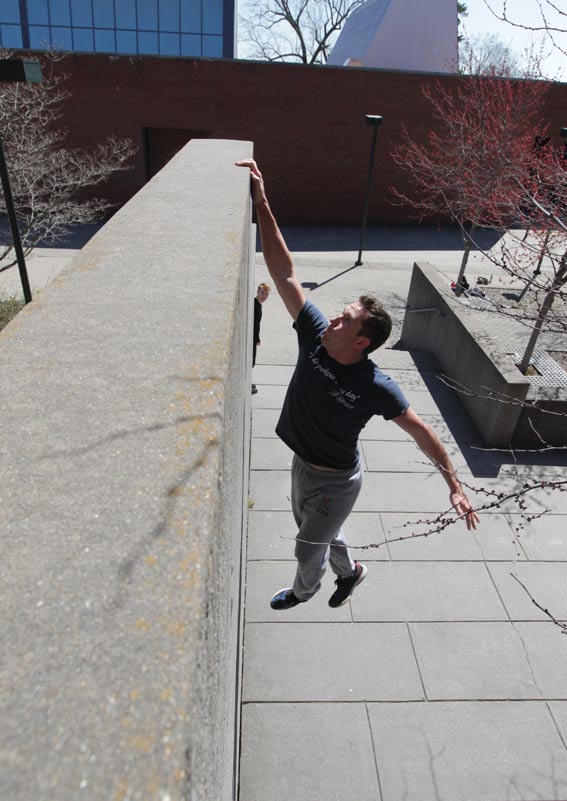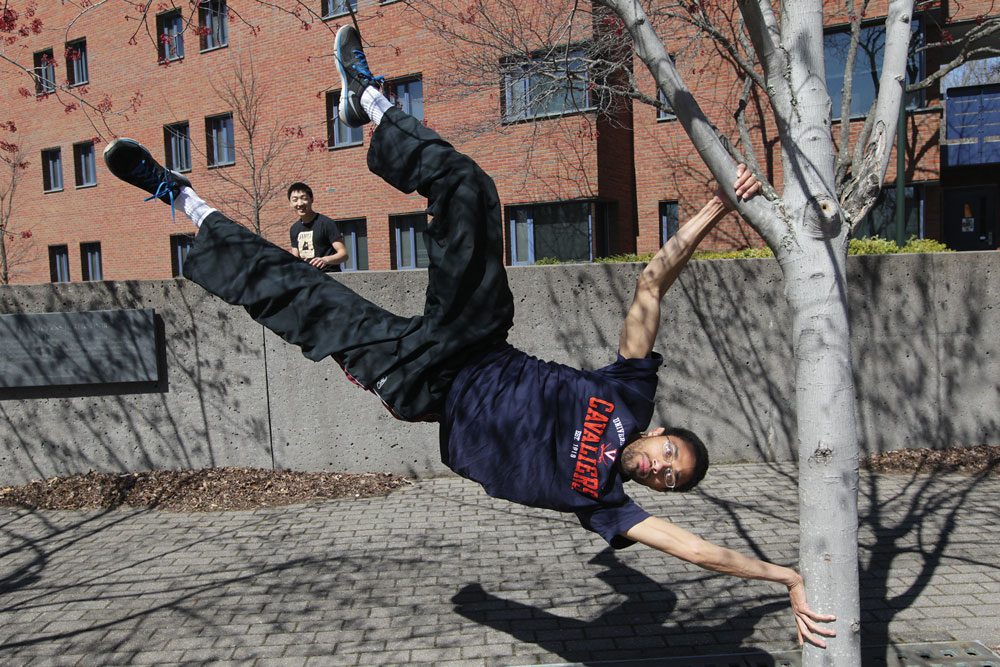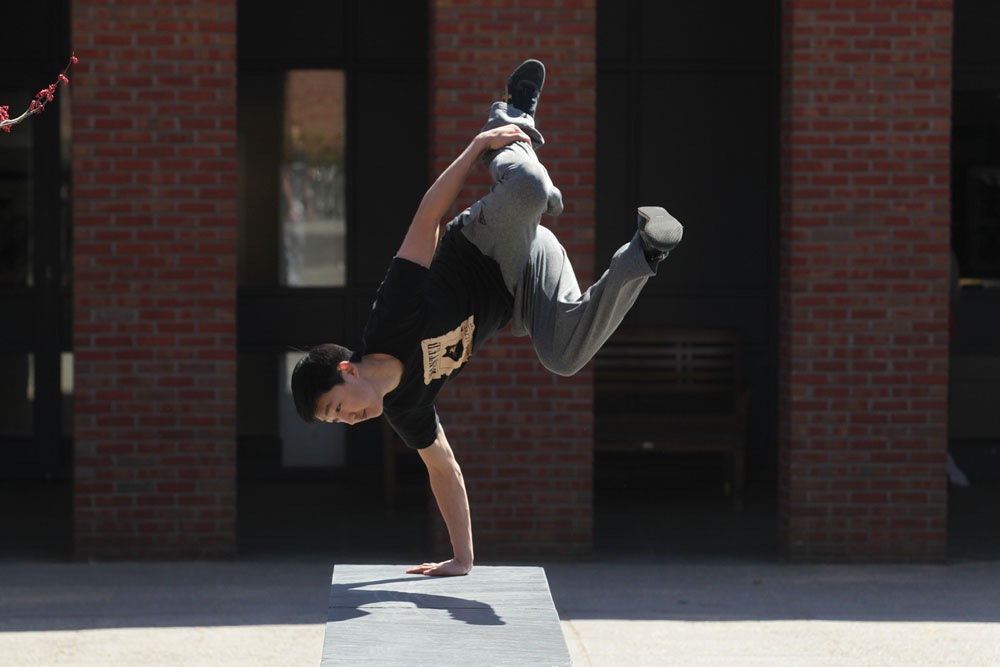Grounds as Playground
Members of UVA's student Parkour group use everyday structures to train.
Second-year student Tyler Lam stares at the 8 feet that separate the handrail he’s standing on and the 6-foot brick wall in front of him near Hereford college.
“I’m psyching myself out so much,” Lam (Col ’17) says. Five other members of UVA’s Parkour Association surround him. Lam, 5 feet 8 inches tall with a lanky frame, stands flat-footed in loose sweatpants and a long-sleeve shirt. He takes a deep breath and leaps, aiming to land on top of the wall ledge.
He misses, grabbing hold of the ledge with both hands before pulling himself up onto it.
What look like ordinary walkways, walls and rails to most passersby around Grounds are actually playgrounds to a handful of Parkour participants, a club sport reintroduced at UVA several years ago.

What exactly is Parkour? “It’s the attempt to get from point A to point B in as little time as possible while overcoming urban objects,” says team member Korbin LeClair (Col ’17).
At one Sunday practice, team members attempt somersault flips over walls, back flips off picnic tables and a sprinting start to jump up onto a 15-foot wall.
The sport was founded in France and has gained popularity in the U.S. and dozens of other locales, including Russia, Poland, Mexico and the United Kingdom. “There is a return to play occurring worldwide, where people are getting back to the exploration of movement they enjoyed as children,” says Eric Rossi, a member of USA Parkour’s college affiliate program.
According to Greg Milano, director of USA Parkour’s college division, there are roughly 30 student Parkour groups in the United States like UVA’s that are officially recognized by their college or university, three times the number that existed just three years ago.
Parkour first arrived at UVA in the early 2000s as a club sport before fading away in 2009-10. In 2011, two students revived the club. This year’s group has around a half-dozen regular attendees and roughly 20 others who come occasionally, says team president Mark Gabele (Col ’15).
They typically meet at Hereford College, the chemistry building or the McIntire Amphitheatre.

While most members are male, LeClair says the group has an occasional female attendee. A large proportion of the team are physics majors, who lend an added layer to discussions of jump distances and routes.
Group members say injuries are infrequent; an ankle sprain has been the only injury in the last couple of years, aside from bruises and scrapes.
“Parkour is not about taking risks. I don’t do any jumps or maneuvers I don’t think I’ll make,” Gabele says. “You train low and you build up from there. If I see a 12-foot gap but I haven’t done a 9- or 10-foot gap, I’m not going to do it. It’s a very calculated procedure.”
On Tuesday evenings, the group trains with the UVA gymnastics club at its indoor facility on spring floors, a trampoline, foam pads and a foam pit—the ideal location to try trickier maneuvers before testing them outdoors.

While they don’t compete against teams from other schools, they schedule so-called “jams,” in which one college group will host several others from across the state to train together, says Adam Trapp (Col ’16).
Most team members played various high school sports. But they say none had ever challenged their minds like Parkour.
“I’ve always been a pretty physical person, but it wasn’t until I started doing Parkour that I realized there’s a huge mental piece,” LeClair says. “You can be working for months to try and get a flip, or climb a wall, and one day you could just get it. That’s what’s wonderful about it.”